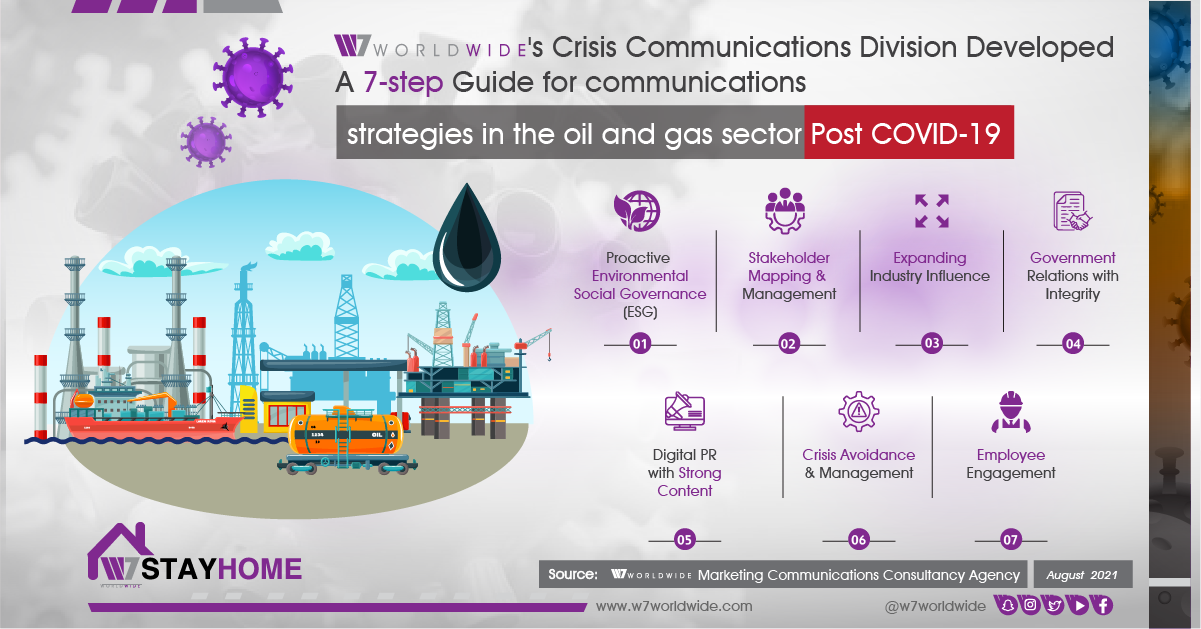
The collapse in demand due to Covid-19 restrictions on travel and the global decline in economic activity had a significant impact on the oil and gas industry. However, according to the Oil and Gas Global Market Report 2021: Covid 19 Impact and Recovery to 2030, the global oil and gas market is expected to grow from $4677.45 billion in 2020 to $5870.13 billion in 2021 at a compound annual growth rate (CAGR) of 25.5 per cent. This growth is mainly due to companies rearranging their operations and recovering from the Covid-19 impact, which had earlier led to restrictive containment measures involving social distancing, remote working, and the closure of commercial activities that resulted in operational challenges. The market is expected to reach $7425.02 billion in 2025 at a CAGR of 6 per cent.
The oil and gas industry is adopting the development of a circular economy to make its operations more sustainable and help address climate change. The circular economy presents a unique market opportunity upwards of $4.5 trillion by 2030. Saudi Arabia, for example, has used its year in the G20 presidency to promote its circular carbon economy scheme. As part of the Vision 2030 program, the Kingdom is the first country to export blue hydrogen for zero-carbon power generation. Saudi Arabia is targeting to take supply leadership in the rapidly growing hydrogen market.
“Public opinion has always played a large part in the oil and gas industry around economic, environmental, community and safety issues,” emphasizes Abdulrahman Inayat, co-founder and Director of W7Worldwide. “Effective communication is therefore critical as a vital tool for companies to differentiate themselves from competitors and demonstrate credibility, expertise, and trustworthiness. Employees, customers, the industry, the community, and other audiences need to hear from you with your plans for a resilient and sustainable future.”
W7Worldwide produced a ‘7-Step Communications Guide to help Transform Oil & Gas Sector Post Covid-19’, setting out the key tactics to apply for a future-proof communications strategy. The report advises that leaders in the oil and gas sector need to adopt climate-focused principles into their business models; organizing messaging about both the energy transition, the expected need for oil and gas for decades to come, as well as the value of oil and gas companies in building the next generation of clean energy resources and technologies.
A multitude of stakeholders are involved throughout all various stages of an oil and gas project, so they need to be kept well informed and engaged to create positive outcomes for everyone. Companies are advised to expand their influence with thought leadership, industry and government level outreach to see the organization’s perception shift from operator to thought leader and change-maker. To appeal to today’s talent, publics, and customers, oil and gas companies must meet them where they are, and that is online. Branded messaging needs to move away from the technical jargon and instead present compelling content that resonates.
With the Covid-19 pandemic, the kind of emergencies and crises the oil and gas sector is used to dealing with have changed and become more wide-ranging. The combination of personnel accountability and effective communications drives a fast and effective crisis response. The oil and gas sector is currently facing the twofold challenge of sustaining operations and managing its workforce. The industry has long been grappling with high employee turnover and attracting talent to, often, remote or difficult locations. Business success, therefore, depends on focusing on people’s engagement in the company culture.
Corporate PR and Communications can no longer be considered a support function to the oil and gas sector. Sustained public relations campaigns will help drive the organizational and business strategy change imposed by Covid-19, build public perceptions around safety and sustainability issues, and drive reputation with key stakeholders.

- Proactive Environmental Social Governance (ESG)
- Stakeholder Mapping & Management
- Expanding Industry Influence
- Government Relations with Integrity
- Digital PR with Strong Content
- Crisis Avoidance & Management
- Employee Engagement









